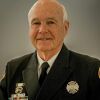It’s the time of year when your budget has been approved, your staffing and new purchases have been allocated (or not), and the key elements of your strategic plan have been decided. Or have they?
What are your thoughts on new strategic partnerships – ones that can help make your department more efficient and responsive to the needs of your community?
Whether your department covers a population of 400 or 4 million, have you included the development of new strategic partnerships in your plans for the coming year? If not, let me give you a few examples of some strategic partnerships that are relatively easy to develop.
American Red Cross: Partner to provide free smoke detector installation
First and foremost, have you contacted your local chapter of the American Red Cross regarding its Home Fire Campaign? In 2014, the American Red Cross launched this campaign in an effort to reduce the number of lives lost in home fires. A program within this campaign known as Sound the Alarm has placed thousands of smoke detectors in homes throughout the country. This program includes smoke detector installations, not just giveaways, so there is an element of responsibility on the part of each participating fire department.
Over the past four years, my department has offered to install smoke detectors provided by the Red Cross to area residents. To date, we have installed more than 700 smoke detectors. We inventory and are accountable for all the detectors issued to us and, in turn, we report quarterly to our local Red Cross chapter with a copy of our records listing where the smoke detectors have been installed and the original signed release by the homeowner or resident giving us permission to make the installation.
We continually publicize this smoke detector program throughout our response area and have canvassed six of our neighborhoods following either a serious or fatal residential fire. We send out flyers approximately one week before a canvass to let residents know when we are coming, but also soon enough after a fire to bring relevance to the neighborhood.
Each Red Cross smoke detector comes with a 10-year tamper-proof lithium-ion battery that, once installed, doesn’t need to be changed for the life of the detector. The installation can be done with an ordinary Phillips-head screwdriver, but we use a cordless drill with a Phillips-head chuck for speed and ease of installation.
Those departments that service a smaller population may think they are too small to go to all this trouble, but in those cases, working as a group through your county or state fire chiefs association may be an answer. No matter how you choose to get involved in this program, the goodwill from the residents you serve will be felt by your local department.
Smart911: Promote registration to help locate emergency callers
We live in a digital age where over 80% of 911 callers are using cell phones. When emergencies are called in using a landline, the address of the fixed telephone is automatically provided to the 911 call center. With the predominant use of cell phones, many of us have received serious emergency calls in which the caller doesn’t know their location or is too disoriented to be coherent. Smart911 helps solve this problem.
Fire departments should help promote Smart911 for several reasons.
- Smart911 is a national program, endorsed by several groups, including FEMA, that can pinpoint a caller within a few feet of the actual location when calling any 911 call center around the country.
- Smart911 also allows a person to create a profile that may, depending on the wishes of the individual, include a medical history or other pertinent information, such as a license plate number or description of their car. This information can be included on dispatch or sent via a secure mobile data computer.
- Smart911 can give the user emergency information ranging from an Amber Alert to advanced severe weather information based on their location. With the advent of 5G cellular networks, the location finder will be faster and even more accurate than what is presently available.
Recently I traveled nearly 1,500 miles, crisscrossing five states over the course of three days. I traveled on interstate highways, state routes and country lanes, but at times would not have been able to determine exactly where I was in the event of an emergency. Once I registered my cell phone with Smart911 and created a profile, I was assured that emergency personnel could find me using the nearest cross-intersection or by geographic coordinates.
Houses of worship: Connect with the community
Strategic partners can and should include local organizations. One of the most underutilized, yet most influential, local organizations in any community are houses of worship. In some areas, these institutions have become a melting pot for diverse cultures, including those for whom English is a second language. These residents may be harder to reach when dealing with fire, EMS or community risk reduction (CRR) matters.
Working with a house of worship allows everyone to feel comfortable with those of us who wear a uniform while discussing life-saving issues. Something as simple as a sentence or two in their weekly bulletin may make more of the worshipers familiar with your CRR programs or help fill the ranks at volunteer departments looking for new members.
Use your imagination to develop partnerships
There are dozens of other strategic partners that may fit your needs. From the local business association or chamber of commerce to a physician’s emergency care facility or pharmacy and even national restaurant chains, there are countless people and organizations that can help you and your department with sound advice or, in some cases, financial aid. You need only to take a chance, ask for their help and be willing to accept a “no” or two without becoming discouraged.
Stay safe!




